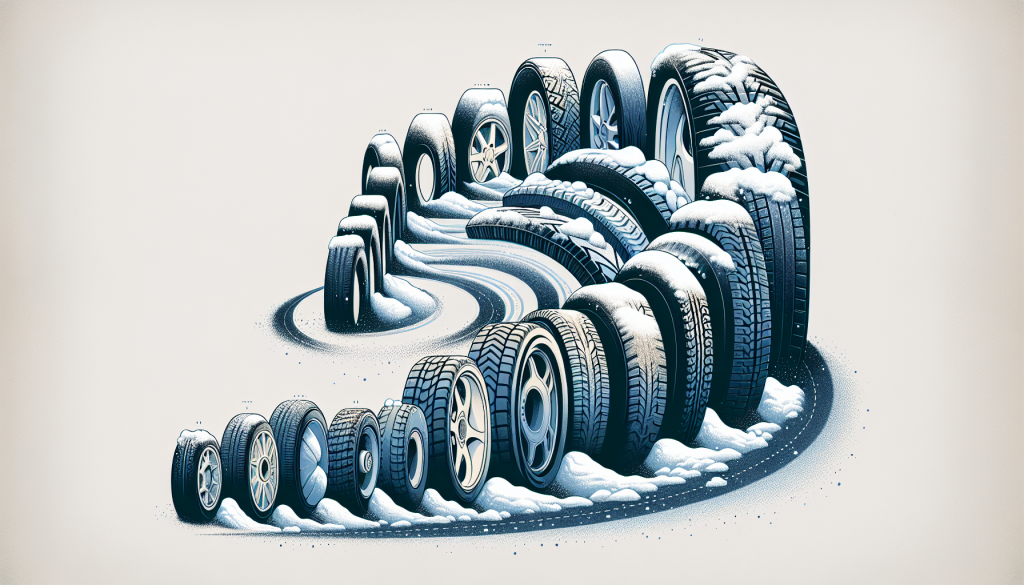Winter Tire Tips You Need to Know
What Happens When You Change Tire Sizes
Swapping out your tire and wheel sizes isn’t just about changing the look; it messes with how your car runs and feels. Bigger tires mean a bigger circumference, so they spin fewer times per mile. This can throw off your speedometer, making it show you’re going slower than you are. That’s not just annoying – it can be risky. Not to mention, your odometer might say you’ve driven less than you really have, screwing up your maintenance schedule (Evans Tire & Service Centers).
Want to dive deeper into how tire sizes play a role? Check out our guide on winter tire performance trade-offs.
Clearance and Gas Mileage
Think bigger tires are just nifty? Well, think again. They mess with the clearance, especially when you’re driving in snowy conditions or rough terrains. Turning and bumpy rides can cause the tire to scrape against the fender and suspension – not fun. Also, bigger means heavier. Your engine’s going to need to work overtime, which slurps up more gas.
Got questions about how tire size messes with your car’s overall game? Head over to our section on winter tire rolling resistance impact.
| Tire Size | Gas Mileage Hit |
|---|---|
| Standard | Normal |
| Heavier | Lower |
Why You Should Ask the Pros
Getting some professional advice about the best tire and wheel sizes is golden. Experts can crunch the numbers and give you solid recommendations that beef up performance and keep you safe. Trusted tire places like Evans Tire & Service Centers are your go-tos for making smart choices.
Need custom tips and expert advice? Check out our resource on winter tire expert recommendations.
For more info, peek at these must-reads:
- winter tire performance reviews
- winter tire technologies explained
- winter tire durability assessment
- winter tire traction ratings explained
- pros and cons of studded winter tires
Picking the Right Winter Tires
Choosing the perfect winter tires can be a game-changer for your safety and driving experience on icy roads. Let’s dive into the essentials to help you make the best choice.
Tires for Snowy Roads
When it comes to driving in snow, not all tires are created equal. Winter tires can dramatically improve your grip and control on snow-covered streets. It’s essential to pick tires specifically designed for those frosty conditions, with treads and rubber that stay flexible even when temperatures plummet.
Thinking about how different brands stack up? Check out our winter tire performance reviews for the lowdown.
Going Smaller for Better Winter Driving
Ever heard of downsizing your tires for winter? It’s a trick that can actually make your car handle better in the snow. Smaller, narrower tires can slice through snow more effectively, giving you better traction and stability. Plus, they often come cheaper too!
Here’s a handy table to show how different sizes shake out on snowy roads:
| Wheel Diameter | Tire Width | Aspect Ratio | Snow Performance |
|---|---|---|---|
| 18″ | 225 mm | 60 | Good |
| 17″ | 215 mm | 65 | Better |
| 16″ | 205 mm | 70 | Best |
Smaller wheels can also help absorb shocks from all those pesky winter potholes, making for a smoother ride. Want more nitty-gritty details? Check out our winter tire sizes availability page.
Downsizing, or “minus sizing,” could save your rims from those winter hazards while also keeping your speedometer accurate. It’s a win-win for safety and performance.
Looking for more expert advice on picking the right tires? Dive into our winter tire expert recommendations for deeper insights.
Stay safe out there, and remember—good tires are your best friend in winter!



